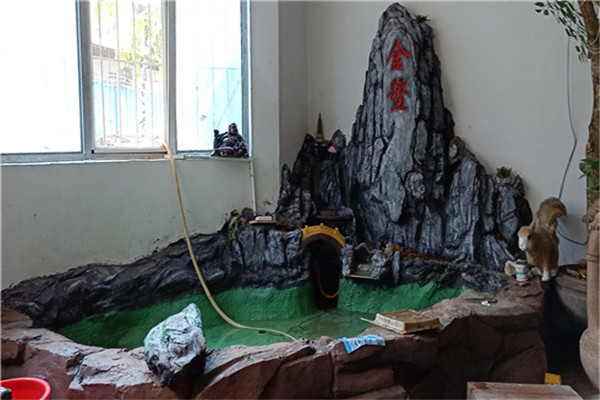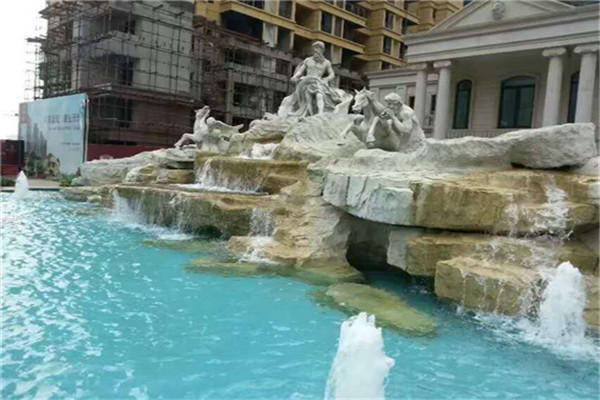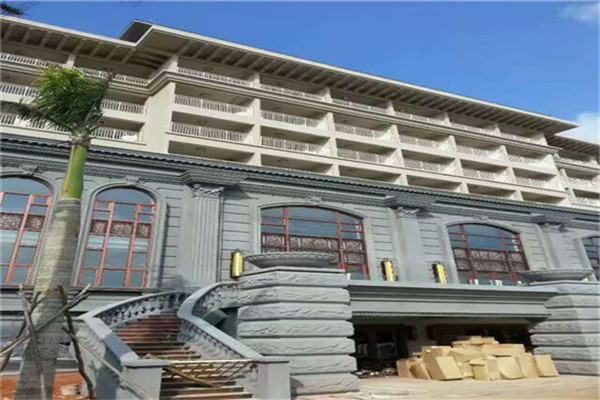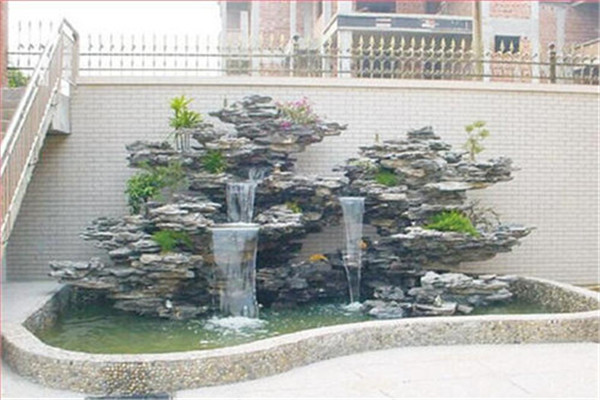
From the perspective of development, sculpture can be divided into traditional sculpture and modern sculpture. Traditional sculpture is a visual, tactile and static three-dimensional art form molded with traditional materials; Modern sculpture uses new materials to make anti traditional four-dimensional, five-dimensional, acousto-optic, soft and dynamic sculptures. According to traditional materials, and according to environment and function, it can be divided into urban sculpture, garden sculpture, indoor sculpture, outdoor sculpture, desk sculpture, shelf sculpture, etc. There are many kinds of sculpture materials, such as clay, stone, wood, metal, gypsum, resin, ivory, etc. Then several categories were developed: wood carvings: wood carvings have a long history. Most of the early themes were centered on religion. In addition to religious icons, they were also used for the decoration of altars and religious places. In countries where wood building flourishes, wood carving develops with architecture. Modern wood carvings have quite diversified styles and features, and artists like to use abstract forms to express them. In addition, wood carving is also an important contributor to the invention of printing. Please see woodcut prints for details; Stone carving: The regions where stone carving is developed have a lot to do with where the stones suitable for carving are produced. The regions where stone carving is developed have a long history of stone carving. In the past, stone carvings were often used as decorations of gardens, signs of doorways, or architectural decorations of mausoleums. Because the stone is thick (not easy to be stolen), and the details of carvings are not easy to be damaged by wind and rain, stone carvings are mostly in outdoor environments. The common stone carving material is marble. There are clay sculptures, ice sculptures, sand sculptures, metal sculptures and pottery.

The art of carving various patterns and images on stones, usually also refers to sculpture handicrafts carved from stones. Chinese stone carving can be divided into bluestone carving, marble carving, white marble carving, talc carving, black crystal stone carving, colored stone carving, pebble carving, etc. The bluestone carvings in Hui'an, Fujian, are famous for architectural decoration and stone lions. The mouth of the stone lion contains stone beads that roll freely, and is famous in Southeast Asia. The marble carving in Yunnan is made from the marble of Diancang Mountain. Its patterns are like colored mountains and rivers, or dangerous peaks and valleys, or waterfalls follow the clouds. The inlaid furniture is unique. White marble carvings in Quyang, Hebei, Fangshan, Beijing and other places were mainly used for palace architectural decoration in the Ming and Qing dynasties, such as Huabiao, stone lions, railings, etc; Modern times are used for decoration of public and memorial buildings, such as the Great Hall of the People, the Monument to the People's Heroes, Chairman Mao's Memorial Hall, etc. Talc carvings in Haicheng, Liaoning Province and Laizhou, Shandong Province use small and cute animals as traditional varieties. The carvings of black crystal stone in Dongkou, Hunan and Lichuan, Hubei are dark and bright. Caishi carving is mainly produced in Qingtian, Zhejiang, Shoushan, Fuzhou and Liuyang, Hunan. Pebble carvings are mainly produced in Lanzhou, Shenyang and other places. Stone carving techniques include intaglio (contour carving), shadow carving, relief, round carving (complete three-dimensional carving without any background), and openwork (also known as openwork). Shadow carving is a unique technique of Fujian Hui'an bluestone carving. It uses steel drills of different sizes to chisel on the bluestone, and uses the size, depth and density of the drill points to express the images of landscapes, birds, animals, people, flowers, etc.

Bonsai sculpture is an ingenious combination of plant cultivation technology and garden art. It is an organic unity of landscape, basin and several frames. It is mainly composed of trees and shrubs, with rocks, people, buildings, etc. as the background, to show the beautiful scenery of giant trees in the wilderness, lush forests or ancient trees with thousands of years. There are evergreen pines and cypresses, such as five needle pine, black pine, larch, juniper, etc; Flowers and fruits include camellia, brome, June snow, longevity peach, fire thorn, pomegranate, etc; Miscellaneous trees include broad-leaved trees, shrubs such as elm, skeleton, etc. The miniature bonsai, which is the size of a wine cup, is planted in a basin with a wild state, exquisite and attractive plant shape. The cursive potted landscape refers to the shape of plants into a certain word, commonly used as elm with golden leaves, rose vine, etc. The chrysanthemum potted landscape is to use the small chrysanthemums grafted on Artemisia annua to twist the artemisia stem and form a vigorous tree trunk by manual traction; Modern green sculpture three-dimensional sculpture, also known as "three-dimensional painting", can enjoy different scenery from different angles and positions. There are combinations of rattan plants and buildings, such as green bridge columns, colorful landscape walls, etc. There are sculptures of grass and flowers, such as the charmingly naive giant panda, the beautiful peacock, the elephant with a long nose, the giraffe with a raised neck, flocks of cattle and sheep, monkeys playing on horseback, etc

EPS decorative line is a new type of exterior wall decorative line and component, which is more suitable for installation. On the walls with EPS and XPS insulation of exterior walls, it can not only reflect the European classical and elegant decorative style, but it is very difficult to install cement components, with a long construction period, cracks will appear over time, and poor durability. However, using EPS decorative line has the advantages of convenient installation, economy, and long durability. With the continuous development of the building decoration industry, more and more new materials have come to the fore, which are favored by more and more people. More and more enterprises have entered the EPS line, and some professional companies have come to the fore. Not affected by temperature change, cold resistant and heat resistant; Not affected by humid climate and acid rain. EPS decorative lines can prevent fire without emitting toxic substances, and are environmental friendly high-quality decorative building materials. EPS decorative lines are cut by computer numerical control, which is fast in production and has many varieties and models, such as lines, Roman columns, window covers, brackets, etc., and can be installed on the four sides of windows, door edges, eaves corners and wall bodies; Make the facade of the building more beautiful, and bring new and different ideas to the architects.

The round sculpture is completely three-dimensional, and the audience can enjoy it from all directions. For example, from the front, we can see the image of holding one's head high, clenching one's teeth, glaring at the enemy and being invincible. On the side, the audience can only see the right hand and left hand clenching their fists, showing Liu Hulan's inner anger through gestures, as well as her desire to smash the old world and wipe out the enemy. The back is relatively simple, and only the hair and clothes lines intertwined by the wind can be seen. In this way, the audience can see all aspects of Hainan sculpture from all angles, thus forming the overall sense of artistic image. The undulation of body is the main means of expression of sculpture, just as words are to literature, and color is to painting. The sculptor can boldly exaggerate, choose and combine the ups and downs of the body according to the needs of the theme content, without being restricted by the normal. The ups and downs of the body are the broad stage on which sculptors can gallop.

The handicrafts made by forging copper are lifelike in shape and easy to sculpt Kunming Sculpture The lines of the handicrafts are very smooth. Even if you look carefully, you will not find any shortcomings. Of course, you need to ensure the craftsmanship of the sculptors. Only the craftsmanship can ensure the shape and image of the forged copper sculpture handicrafts. In the process of production, brass or copper plate is usually used as the base, and then forging is carried out, and multiple forged copper plates are used to show the overall image of the handicraft. For many sculpture artists, corresponding copper plates are selected for forging. Sculpture Price The forging copper processing technique is unique. Attention should be paid to heating the copper plate, then forging, after a certain forging, polishing and polishing to make the surface smooth, so as to become the desired forging copper sculpture handicrafts, which are all hand-made, very public welfare, natural and vivid in appearance. Attention should be paid to the handicrafts produced, Certain maintenance is required to ensure its appearance is not affected.






